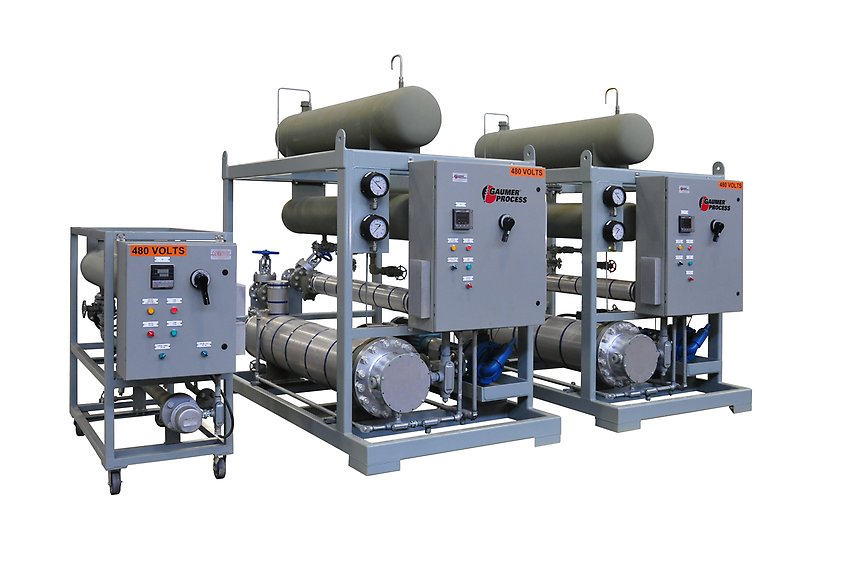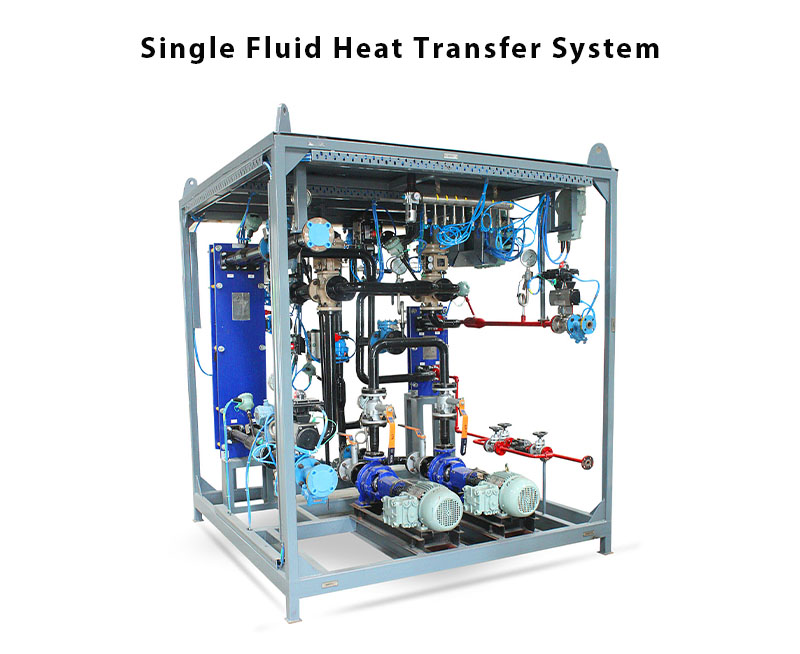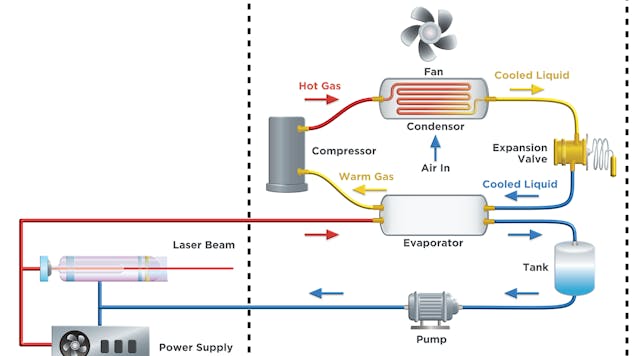How DVS Heat Transfer Systems Use Nanotechnology to Outperform Traditional Cooling Systems
Wiki Article
A Comprehensive Guide to Choosing the Right Heat Transfer Solutions for Your Demands
Choosing the appropriate Heat transfer system is necessary for operational effectiveness. Different systems cater to various requirements, influenced by aspects such as temperature range and fluid kind. Comprehending the concepts behind Heat transfer, such as radiation, transmission, and convection, is critical. Furthermore, evaluating power sources and maintenance methods can impact lasting performance. A closer examination of these factors to consider reveals exactly how to customize a system to certain demands. What should one prioritize in this complex decision-making process?Comprehending Heat Transfer: Key Principles and Principles
Although Heat transfer may feel like a straightforward concept, it incorporates a variety of concepts that are essential for effective system design. Recognizing these principles is essential for engineers and designers that intend to maximize thermal efficiency in numerous applications. Conduction, as an example, involves the transfer of Heat with solid materials, while convection refers to the movement of Heat within liquids. Radiation, an additional essential principle, describes exactly how Heat can be transferred with electromagnetic waves. Each of these systems plays a vital duty in determining just how energy moves within a system. By thoroughly grasping these principles, experts can make informed choices, making certain that Heat transfer systems operate successfully and satisfy the particular needs of their applications
Kinds Of Heat Transfer Solutions: A Summary
Comprehending the concepts of Heat transfer prepares for discovering the various kinds of Heat transfer systems available. Heat transfer systems can be classified mainly right into three kinds: convection, radiation, and conduction. Transmission involves Heat transfer via solid materials, depending on direct call in between particles. Convection, on the various other hand, takes place in liquids (liquids and gases) where the motion of the fluid itself promotes Heat transfer. Radiation involves the transfer of Heat through electro-magnetic waves and does not call for a medium, permitting it to occur in a vacuum cleaner. Each kind of system has distinctive attributes and applications, making it essential for individuals and companies to carefully examine their specific needs when picking one of the most suitable Heat transfer service.Applications of Heat Transfer Systems in Various Industries
Heat transfer systems play a vital function throughout various markets, influencing effectiveness and item high quality. In commercial manufacturing processes, they assist in precise temperature control, while in food and beverage handling, they ensure security and preservation. In addition, a/c and climate control systems count heavily on efficient Heat transfer to preserve comfy environments.Industrial Manufacturing Processes

Numerous commercial manufacturing procedures depend heavily on efficient Heat transfer systems to make the most of efficiency and improve product quality. In sectors such as metalworking, Heat exchangers play a vital duty in maintaining optimal temperatures throughout welding, spreading, and building. These systems assure consistent Heat distribution, which is crucial for attaining wanted product buildings. Likewise, in the chemical production industry, Heat transfer systems assist in accurate temperature control during reactions, impacting return and safety and security. Furthermore, in fabric production, efficient Heat management is necessary for dyeing and completing processes, influencing color consistency and textile top quality. By selecting appropriate Heat transfer modern technologies, producers can boost power effectiveness and reduce operational expenses, inevitably causing a more lasting and affordable production setting.
Food and Beverage Processing
Efficient Heat transfer systems are just as crucial in the food and drink processing industry, where preserving optimal temperature levels is vital for food security and top quality. These systems play a crucial function in procedures such as sanitation, pasteurization, and food preparation, guaranteeing that items are safe for intake and preserve their nutritional worth. Heat exchangers, for example, effectively move Heat in between fluids, maximizing energy use while reducing temperature variations. Furthermore, refrigeration systems are fundamental for protecting perishable items and extending life span. The selection of Heat transfer innovation directly affects functional performance and product honesty, making it imperative for food and beverage producers to select the appropriate systems customized to their details processing requirements. This cautious choice eventually adds to customer fulfillment and food safety and security.
A/c and Climate Control
While numerous markets count on Heat transfer systems for efficiency, HEATING AND COOLING (Heating, Air Flow, and A/c) plays a crucial role in preserving indoor environment control across numerous setups. These systems use Heat transfer concepts to control moisture, air, and temperature level quality, making sure convenience and safety and security in property, business, and industrial atmospheres. Correctly designed cooling and heating systems improve power performance, reduce operational prices, and reduce ecological impact. In business buildings, for example, reliable environment control adds to staff member productivity and client satisfaction. In industrial applications, heating and cooling systems assist preserve ideal conditions for tools procedure and item conservation. Choosing the best Heat transfer system is vital for conference certain climate control needs and achieving total system efficiency.Assessing Power Sources for Heat Transfer Systems
In evaluating energy sources for Heat transfer systems, a contrast of renewable power options and fossil gas considerations is vital. Eco-friendly resources, such as solar and wind, offer lasting choices that can reduce environmental impact. Conversely, nonrenewable fuel sources stay common because of their recognized infrastructure and power thickness, prompting a cautious analysis of both alternatives.Renewable Resource Options

Fossil Fuel Considerations
Assessing nonrenewable fuel source considerations is necessary for the efficiency and sustainability of Heat transfer systems. Fossil fuels, such as gas, oil, and coal, are traditional power sources that give considerable Heat outcome, making them popular selections for commercial and household applications. Their ecological impact, consisting of greenhouse gas discharges and source exhaustion, elevates issues. When picking a warm transfer system, it is essential to examine the availability, cost, and regulative variables connected with these gas. In addition, the efficiency of nonrenewable fuel source systems need to be taken into consideration, as higher effectiveness can minimize some ecological drawbacks. Ultimately, a balanced approach evaluating efficiency and sustainability can lead decision-makers towards the most proper Heat transfer option for their particular requirements.Variables to Take Into Consideration When Picking a Warmth Transfer System
Selecting an ideal Heat transfer system requires cautious factor to consider of numerous aspects that can considerably impact effectiveness and efficiency. One continue reading this crucial element is the operating temperature variety, which dictates the materials and design suitable for the application. Additionally, the kind of fluid utilized in the system-- whether gas or liquid-- affects Heat transfer effectiveness and compatibility. The system's dimension and capability must line up with the details demands of the procedure to prevent ineffectiveness. Energy source availability is also crucial, affecting operating expense and sustainability. The installation atmosphere, including space constraints and accessibility for upkeep, plays a considerable duty in system option. Ultimately, regulative compliance and security standards must be considered to assure the system fulfills all lawful needs.Upkeep and Effectiveness Optimization for Heat Transfer Solutions
Keeping Heat transfer systems is necessary for making certain maximum effectiveness and durability. Normal upkeep tasks, such as cleaning Heat exchangers and inspecting insulation, assistance stop efficiency losses due to fouling and thermal linking. Additionally, checking system parameters, including pressure and temperature, enables early detection of anomalies, minimizing downtime and costly repairs. Executing a precautionary upkeep routine can maximize efficiency and prolong the life-span of parts. Upgrading to sophisticated control systems can improve functional performance by adjusting to differing problems and loads. By focusing on upkeep and performance optimization, drivers can attain decreased energy usage, reduced operational costs, and enhanced general system dependability, inevitably causing better resource usage and a much more lasting procedure.Future Trends in Heat Transfer Technologies
As industries progressively focus on sustainability and power performance, future fads in Heat transfer innovations are established to undertake considerable improvements. Innovations such as advanced products, consisting of carbon nanotubes and nanofluids, guarantee enhanced thermal conductivity and efficiency. Furthermore, the combination of renewable resource sources into Heat transfer systems is gaining energy, advertising eco-friendly remedies. Smart technologies, consisting of IoT sensing units, are anticipated to transform monitoring and control, making it possible for real-time information evaluation for maximized performance. In addition, the advancement of modular and portable systems will promote easier installment and maintenance, satisfying varied applications. These improvements indicate a shift towards even more lasting, effective, and versatile Heat transfer options, straightening with worldwide power goals and ecological standards.
Frequently Asked Inquiries
What Are the Environmental Impacts of Heat Transfer Systems?
The environmental effects of Heat transfer systems can include greenhouse gas exhausts, energy intake, and potential thermal contamination. In addition, improper visit the website disposal of inefficiencies and materials can add to source exhaustion and community disturbance.How Do I Calculate the Cost-Effectiveness of a Warm Transfer System?
To calculate the cost-effectiveness of a heat transfer system, one need to analyze initial costs, functional costs, upkeep needs, and energy efficiency, contrasting these elements against the anticipated life-span and efficiency of the system.Can Heat Transfer Systems Be Utilized in Residential Settings?
Heat transfer systems can without a doubt be made use of in household settings. They give effective heating and cooling options, making homes more comfortable while possibly decreasing power prices. Their adaptability permits different applications in residential atmospheres.What Safety And Security Rules Apply to Heat Transfer Systems?
Safety and security laws for Heat transfer systems normally include standards on procedure, upkeep, and installation. Compliance with regional building ordinance, supplier specs, and market standards is important to guarantee safe and reliable system performance in various applications.How Do Various Materials Affect Heat Transfer Performance?

Transmission, for circumstances, includes the transfer of Heat through solid materials, while convection refers to the motion of Heat within fluids. Recognizing the principles of Heat transfer lays the groundwork for discovering the different kinds of Heat you could look here transfer systems offered. Heat exchangers, for circumstances, effectively transfer Heat between fluids, maximizing energy usage while lessening temperature level changes. In assessing power resources for Heat transfer systems, a contrast of eco-friendly energy alternatives and fossil gas factors to consider is essential. Metals, such as copper and aluminum, conduct Heat effectively, whereas insulators like rubber and glass slow down Heat circulation.
Report this wiki page